Types of ferrules
Ferrules for hydraulic hoses, textile braids, metal braids, steel layers.
Ferrules
Ferrules for textile reinforced hose :
At the forward end of the ferrule, the recess G is designed to lock onto the collar of the hydraulic insert during swaging : the insert and the ferrule therefore become interdependent.
Moreover, the back-stop B is designed to facilitate mounting and enhance reliability of the hose which cannot hinder the positioning of the collar during swaging.
Barbs (detail C) are not very pronounced, so as not to damage either the textile structure of the hydraulic hose or its outer cover which is not skived before swaging.

Ferrules for steel-reinforced hose with internal and external skiving :
At the forward part of the ferrule, the heel T is designed to lock into the collar of the hydraulic insert during swaging in order to obtain an interdependent assembly.
The boss (detail D) is destined to be swaged directly onto the high-tensile steel spirals, which have previously been skived on the inside and outside, locking them into a female recess on the tail of the hydraulic insert.
Resistance is of high quality, assembly being metal to metal.
The barbs (detail D) are designed to ensure sealing of the inner tube through external compression on the metal spirals.
The back inner shape (detail E) of the ferrule is designed to ensure sealing between the ferrule and the outer rubber cover, in such a way as to prevent any external agent from corroding the metal reinforcement of the hose.
Swaging is considered correct when the internal bore of the hose insert has collapsed by several tenths of a millimeter according to recommendations by TECALEMIT FLEXIBLES®.

Ferrules for steel-reinforced hose without external skiving :
At the forward end of the ferrule, the recess G is designed to lock onto the collar of the hydraulic insert during swaging : the insert and the ferrule therefore become interdependent.
Moreover, the back-stop B is designed to facilitate mounting and enhance reliability of the hose which cannot hinder the positioning of the collar during swaging.
The internal barbs (Detail C) are very pronounced and sharp. During swaging, these barbs bite through the rubber outer cover and into the steel braid or spiral of the hose.
Swaging is correct when the internal bore of the hose insert has collapsed by several tenths of a millimeter accroding to recommendations by TECALEMIT FLEXIBLES®

Ferrules for steel-reinforced hose with external skiving :
At the forward end of the ferrule, the recess G is designed to lock onto the collar of the hydraulic insert during swaging : the insert and the ferrule therefore become interdependent.
Moreover, the back-stop B is designed to facilitate mounting and enhance reliability of the hose which cannot hinder the positioning of the collar during swaging.
The barbs (detail C) , of a fir-tree shape, are pronounced without being sharp.
These barbs bite into the steel braid or spiral of the hose which has been externally skived beforehand.
Swaging is considered correct when the internal bore of the hose insert has collapsed by several tenths of a millimeter according to recommendations by TECALEMIT FLEXIBLES®.

Selection of ferrules according to hose type :
For type S
| Dia Int (inch) | 3/16” | 1/4 | 5/16 | 3/8 | 1/2 | 5/8 | 3/4 | 1” | 1”1/4 | 1”1/2 | 2” |
| Dia Int (mm) | 4,8 | 6,4 | 7,9 | 9,5 | 12,7 | 15,9 | 19,0 | 25,4 | 31,8 | 38,1 | 50,8 |
| Dash | 3 | 4 | 5 | 6 | 8 | 10 | 12 | 16 | 20 | 24 | 32 |
| Hose type | Ferrule Part N° for insert type ‘S’ | ||||||||||
| T 110 EN 853 1ST -R1A | 501003 | 501004 | 501005 | 501006 | 501008 | 501010 | 501012 | 501016 | 501020 | 501024 | 501032 |
| T 111 EN 853 1SN -R1T | 501303 | 501304 502304 | 501305 502305 | 501306 | 501308 | 501310 | 501312 | 501316 | 501320 | 501324 | 501332 |
| T 121 EN 857 1SC | 501404 | 501405 | 501406 | 501408 | 501410 | 501412 | 501416 | ||||
| T 210 EN 853 2ST -R2A | 501003 | 501004 | 501005 | 501006 | 501008 | 501010 | 501012 | 501016 | 502020 | 502024 | 502032 |
| T 211 EN 853 2SN -R2T | 502303 | 502304 | 502305 | 502306 | 502308 | 502310 | 502312 | 502316 | 502320 | 502324 | 502332 |
| T 221 EN 857 2SC | 501304 | 501305 | 501306 | 501308 | 501310 | 501312 | 501316 | ||||
| T 911 EN 856 4SP | 509104 | 509106 | 509108 | 509110 | 509112 | 509116 | 509120 | 509124 | 509132 | ||
| T 912 EN 856 4SH | 509112 | 509116 | 509220 | 509224 | 509232 | ||||||
| T331 SAE 100 R 3 | 503004 | 503005 | 503006 | 503008 | 503010 | 503012 | 503016 | ||||
| T 610 -T611 EN 854 R6 | 507003 | 507004 | 507005 | 507006 | 507008 | 507010 | 507012 | 507016 | |||
| T710 EN 855 R7 | 507003 | 507004 | 507005 | 507006 | 507008 | 507010 | 507012 | 507016 | |||
| T711 EN 855 R8 | 507003 | 507004 | 507005 | 507006 | 507008 | 507010 | 507012 | 507016 | |||
| TTA | 507003 | 507104 | 507005 | 507006 | 507008 | ||||||
| TTK | 507003 | 507104 | 507005 | 507006 | 507008 | ||||||
| T 911 EN 856 4SP | 509104 | 509106 | 509108 | 509110 | 509112 | 509116 | |||||
| T 912 EN 856 4SH | 509112 | 509116 | |||||||||
For type SC
| Dia Int (inch) | 3/16” | 1/4 | 5/16 | 3/8 | 1/2 | 5/8 | 3/4 | 1” | 1”1/4 | 1”1/2 | 2” |
| Dia Int (mm) | 4,8 | 6,4 | 7,9 | 9,5 | 12,7 | 15,9 | 19,0 | 25,4 | 31,8 | 38,1 | 50,8 |
| Dash | 3 | 4 | 5 | 6 | 8 | 10 | 12 | 16 | 20 | 24 | 32 |
| Hose type | Ferrule Part N° for insert type “SC” | ||||||||||
| T 911 EN 856 4SP | 509312 509412 | 509316 509416 | 509620 | 509624 | 509632 | ||||||
| T912 EN 856 4SH | 509312 509412 | 509316 509416 | 509320 509420 | 509324 509424 | 509332 509432 | ||||||
| T915 EN 856 R15 | 509312 509412 | 509316 509416 | 509620 | 509624 | |||||||
For type SD
| Dia Int (inch) | 3/16” | 1/4 | 5/16 | 3/8 | 1/2 | 5/8 | 3/4 | 1” | 1”1/4 | 1”1/2 | 2” |
| Dia Int (mm) | 4,8 | 6,4 | 7,9 | 9,5 | 12,7 | 15,9 | 19,0 | 25,4 | 31,8 | 38,1 | 50,8 |
| Dash | 3 | 4 | 5 | 6 | 8 | 10 | 12 | 16 | 20 | 24 | 32 |
| Hose type | Ferrule Part N° for insert type “SD” | ||||||||||
| T912 EN 856 4SH | 569212 | 569216 | 569320 | 569324 | 569332 | ||||||
| T915 EN 856 R15 | 569212 | 569216 | 569320 | 569324 | 569332 | ||||||
For type AQ
| Dia Int (inch) | 3/16” | 1/4 | 5/16 | 3/8 | 1/2 | 5/8 | 3/4 | 1” | 1”1/4 | 1”1/2 | 2” |
| Dia Int (mm) | 4,8 | 6,4 | 7,9 | 9,5 | 12,7 | 15,9 | 19,0 | 25,4 | 31,8 | 38,1 | 50,8 |
| Dash | 3 | 4 | 5 | 6 | 8 | 10 | 12 | 16 | 20 | 24 | 32 |
| Hose type | Ferrule Part N° for insert type “AQ” | ||||||||||
| T961 AQUABLAST | 569704 | 509606 | 509608 | 509612 | 509616 | ||||||
| T962 AQUABLAST | 509606 | 509608 | 509612 | ||||||||
| T1362 AQUABLAST | 569806 | 569808 | 569812 | 569816 | |||||||

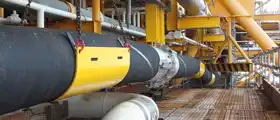
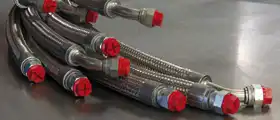
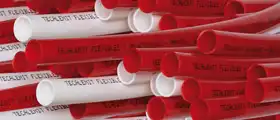
 Department specialized in manufacturing high-quality industrial hoses for fluid transfer.
Department specialized in manufacturing high-quality industrial hoses for fluid transfer. Specialist in the manufacturing of hydraulic hoses, extrusion of pneumatic tubes, and production of thermoplastic preforms.
Specialist in the manufacturing of hydraulic hoses, extrusion of pneumatic tubes, and production of thermoplastic preforms. Wide selection of industrial and hydraulic hoses and fittings in the Paris region.
Wide selection of industrial and hydraulic hoses and fittings in the Paris region. Machining of fittings for industrial and hydraulic hoses, crimped ferrules, and stainless steel corrugated hoses.
Machining of fittings for industrial and hydraulic hoses, crimped ferrules, and stainless steel corrugated hoses. 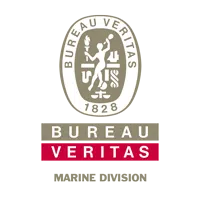
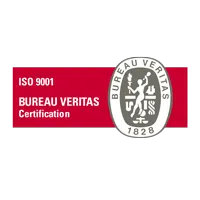

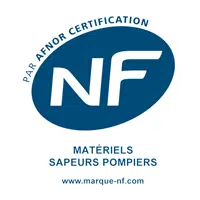

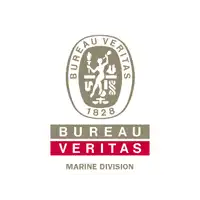 Type approval certificates for hydraulic hoses
Type approval certificates for hydraulic hoses Development of the company and its infrastructures
Development of the company and its infrastructures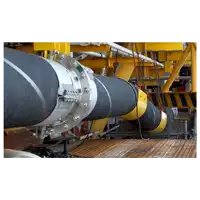 Tecalemit Flexibles strengthens its presence in the energy sector
Tecalemit Flexibles strengthens its presence in the energy sector A pulse bench with exceptional capabilities
A pulse bench with exceptional capabilities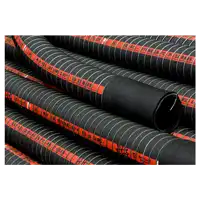 Hose type approvals for the transport of hazardous materials
Hose type approvals for the transport of hazardous materials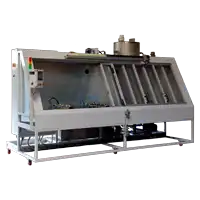 A depollution bench of our design
A depollution bench of our design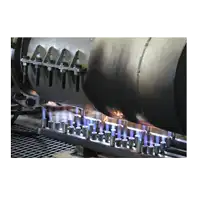 BV type certification for fire resistant hoses
BV type certification for fire resistant hoses